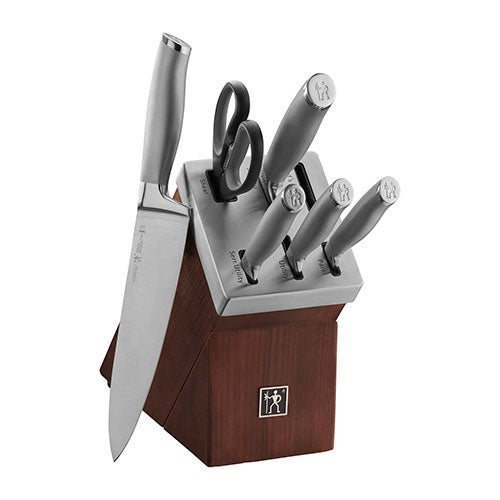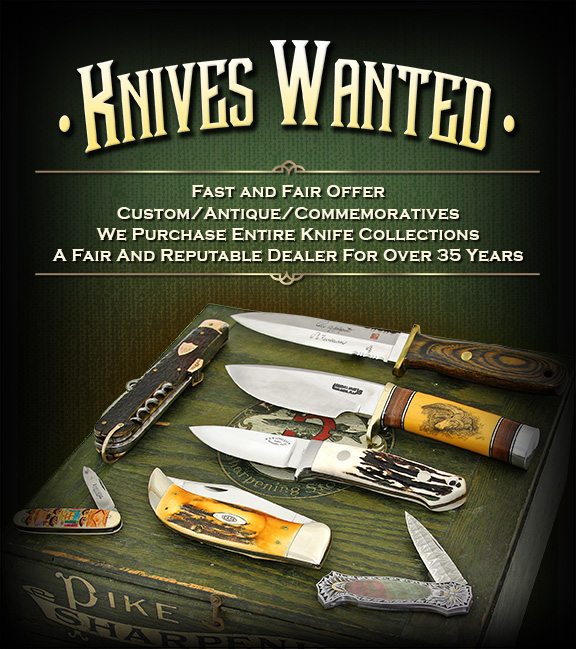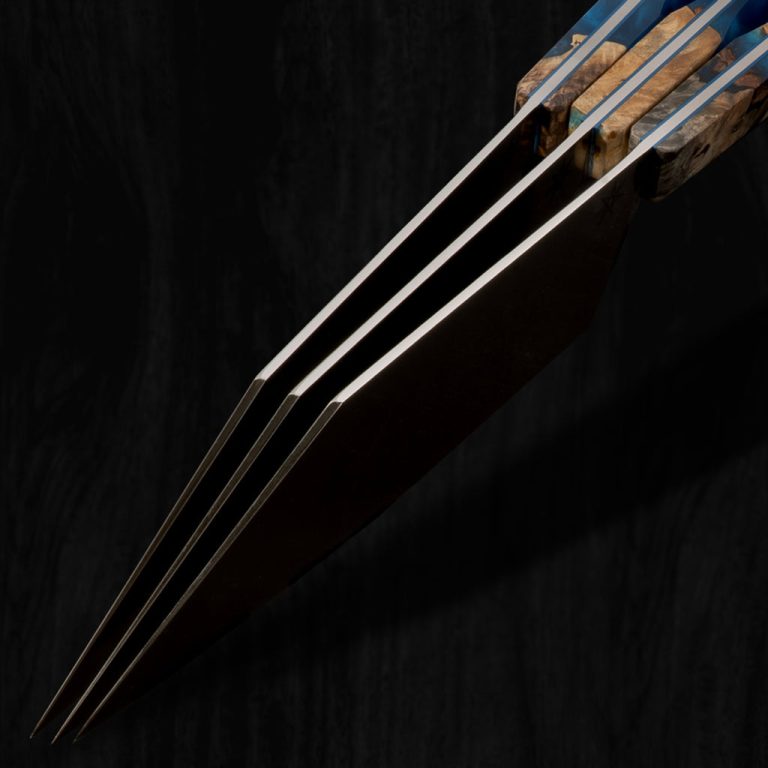The Science of Sharpness: Home Knife Sharpening
In home knife sharpening, understanding the science of sharpness is key to achieving optimal results. With careful adherence to the right techniques and principles, you can ensure your knives are sharpened effectively, enhancing their cutting performance and longevity.
Proper knife sharpening involves the removal of metal, aligning the blade’s microscopic teeth, and creating a precise bevel angle for sharpness. This article explores the science behind sharpness. And provides valuable insights into how to achieve professional-level results in the comfort of your own home.
Discover the secrets to master the art of knife sharpening and take your culinary skills to the next level.
Understanding The Basics Of Knife Sharpness
Discover the fundamentals of knife sharpness and the science behind home knife sharpening. Enhance your understanding of the art and technique of keeping your knives sharp and efficient.
Importance Of Sharp Knives In The Kitchen
Maintaining sharp knives in the kitchen is crucial for a multitude of reasons. Let’s explore why sharp knives are indispensable assets in any culinary setting:
- Efficient cutting: Sharp knives slice through ingredients effortlessly, ensuring precision and reducing the risk of accidents.
- Better flavor retention: Clean cuts made by sharp knives help minimize damage to food cells, preserving flavors and textures.
- Reduced prep time: With sharp knives, you can breeze through meal preparation, chopping and slicing quickly and efficiently.
- Versatility: Sharp knives are versatile tools that allow you to tackle various cooking techniques, from delicate slicing to robust chopping.
Anatomy Of A Knife Edge
Understanding the anatomy of a knife edge is essential in comprehending the mechanisms behind sharpness. Consider the following components:
- Cutting edge: The cutting edge is the portion of the blade that comes into contact with the food and performs the actual cutting action.
- Bevel: The bevel is the angled surface on each side of the blade, forming the cutting edge.
- Edge angle: The edge angle is the degree at which the bevel is formed, determining the sharpness and durability of the knife.
The Relationship Between Sharpness And Cutting Performance
Sharpness and cutting performance go hand in hand, impacting the overall cooking experience. Here’s how they are interconnected:
- Ease of cutting: The sharper the knife, the less force required to cut, resulting in smoother and more precise cuts.
- Reduced tearing: Sharp knives minimize tearing and crushing of ingredients, maintaining their integrity and visual appeal.
- Enhanced safety: A sharp knife allows for better control, reducing the likelihood of slips and accidental cuts.
The Role Of Blade Angle In Sharpness
The blade angle plays a vital role in the sharpness of the knife. Consider the following aspects:
- Smaller angle: Knives with smaller edge angles, such as 15 degrees, tend to be sharper but may require more frequent sharpening.
- Larger angle: Knives with larger edge angles, like 20 degrees or more, can be more durable, often lasting longer between sharpening sessions.
- Finding the balance: The optimal blade angle depends on the knife’s purpose and the user’s preferences, striking a balance between sharpness and longevity.
With a solid understanding of these basics, you can now delve deeper into the world of home knife sharpening, ensuring that your knives are always ready to tackle culinary challenges. So let’s get sharpening!
Choosing The Right Sharpening Method
Choosing the right sharpening method for your home knife is crucial to achieving optimal sharpness. Explore the science behind sharpening techniques to enhance your knife maintenance routine.
Pros And Cons Of Different Sharpening Techniques:
One of the most critical decisions you’ll make when it comes to home knife sharpening is choosing the right sharpening method. Each method has its own set of pros and cons that you should consider before making a decision:
- Manual sharpening:
- Affordable and easily accessible for home use.
- Allows for precise control over the sharpening process.
- Requires some skill and practice to achieve optimal results.
- Time-consuming compared to electric sharpening methods.
- Electric sharpening:
- Fast and efficient, making it ideal for those with limited time.
- Requires minimal skill and effort to sharpen knives effectively.
- May remove more metal from the blade, reducing its lifespan compared to manual sharpening.
- Generally more expensive than manual sharpening tools.
Factors To Consider When Selecting A Sharpening Method:
When choosing a sharpening method for your knives, it’s essential to take into account several factors to ensure the best outcome:
- Knife type: Different knives may require specific sharpening techniques. For instance, serrated knives generally need specialized sharpening tools designed for their unique edges.
- Sharpening skill level: Consider your expertise and comfort level with sharpening. If you’re a beginner, manual sharpening methods may require more practice to achieve desired results.
- Time availability: Evaluate the time you can dedicate to sharpening your knives. Electric sharpening methods are typically quicker, while manual methods may require more time and patience.
- Blade condition: If your knife blades have significant damage or dullness, it may be better to start with a coarse sharpening method before moving on to finer techniques.
- Budget: Your budget may influence the type of sharpening method you choose. Manual sharpening tools are generally more affordable, but electric sharpeners can provide convenience if you’re willing to invest a bit more.
Remember, selecting the right sharpening method is crucial in maintaining your knives’ sharpness and longevity. Take into account your specific needs and preferences before making a decision. So, let’s delve deeper into the world of manual sharpening and electric sharpening to help you decide which method suits you best.
Sharpening Techniques: Step-By-Step Guides
Discover the science of sharpness with our step-by-step guides on home knife sharpening techniques. Master the art of honing your blades with easy-to-follow instructions.
The Science Of Sharpness: Home Knife Sharpening
Maintaining sharp knives at home is essential for precision and efficiency in your culinary endeavors. While professional knife sharpening services are available, learning to sharpen your knives at home can save you time and money. We will explore different sharpening techniques, step-by-step guides, and the tools you need to keep your knives razor-sharp.
Let’s dive right into it!
Method 1: Using A Whetstone
Whetstones, also known as sharpening stones, are one of the most popular tools for achieving a fine edge on your knives. Here’s a step-by-step guide on how to use a whetstone effectively:
- Preparing the whetstone:
- Immerse the whetstone in water for about 10-15 minutes to ensure proper lubrication.
- Place a damp towel beneath the whetstone to prevent slipping during sharpening.
- Holding the knife at the correct angle:
- Hold the knife handle firmly with your dominant hand.
- Position the blade on the whetstone, forming an angle of approximately 20 degrees between the blade and the stone.
- Performing the sharpening strokes:
- Starting from the base of the blade, move the knife in a sweeping motion towards the tip.
- Repeat this process on the other side of the blade, maintaining a consistent angle.
- Alternate between both sides of the blade, ensuring even sharpening.
- Finishing touches and testing the sharpness:
- After several sharpening strokes, flip the whetstone to the finer grit side for honing.
- Repeat the sharpening process, using lighter pressure.
- Test the sharpness of the knife by slicing through a piece of paper or a ripe tomato.
Method 2: Sharpening With A Honing Rod
A honing rod, also known as a sharpening steel, is an effective tool for realigning the edge of a knife between sharpenings. Here’s how to use a honing rod properly:
- Understanding the purpose of a honing rod:
- A honing rod is not intended for sharpening but rather for maintaining the edge and alignment of the knife blade.
- Correct grip and technique:
- Firmly hold the honing rod vertically in your non-dominant hand.
- Hold the knife handle with your dominant hand, keeping the blade at a 20-degree angle to the rod.
- Executing the honing strokes:
- Start at the base of the blade and draw the knife down across the rod, moving towards the tip with gentle pressure.
- Repeat this process on the other side of the blade, maintaining a consistent angle.
- Alternate between both sides of the blade, ensuring an even honing.
Method 3: Using A Knife Sharpener
Knife sharpeners come in various types, including manual and electric options. Here’s a guide on how to use them:
- Different types of knife sharpeners:
- Manual sharpeners: These typically consist of slots with built-in abrasive materials and are suitable for most kitchen knives.
- Electric sharpeners: These motorized devices offer quick and convenient sharpening but may require more precision.
- How to use a manual knife sharpener:
- Place the heel of the blade into the sharpening slot and pull the knife towards you, following the manufacturer’s instructions.
- Repeat this process, gradually moving towards the tip of the blade.
- Ensure even pressure and avoid excessive force to prevent blade damage.
- How to use an electric knife sharpener:
- Familiarize yourself with the manufacturer’s instructions for your specific model.
- Generally, you will insert the blade into the appropriate slot and activate the machine.
- Follow the recommended number of passes and be cautious of overheating the blade.
Now that you have a clear understanding of various sharpening techniques, step-by-step guides, and the tools involved, you can confidently sharpen your knives at home. Regular maintenance will keep your knives sharp and make your culinary pursuits a breeze. Happy sharpening!

Credit: www.youtube.com
Maintaining And Caring For Sharp Knives
Discover the secrets of maintaining and caring for sharp knives in this comprehensive guide to home knife sharpening. Learn the science behind sharpness and gain practical tips to keep your knives in top condition, ensuring precision cutting every time.
Storing Knives Properly To Prevent Dulling:
- Use a knife block, magnetic strip, or sheath: This helps to protect the blade from unnecessary contact with other utensils, preventing nicks and dulling.
- Avoid storing knives loosely in a drawer: When knives rub against other objects, their edges can become dull. It’s best to use a storage method that keeps them securely in place.
- Keep knives clean and dry before storage: Moisture can cause rust and corrosion, leading to dull blades. Make sure to wipe knives dry before putting them away.
Regular Honing And Maintenance Routines:
- Use a honing rod or sharpening steel: Regular honing keeps knife blades aligned and sharp. Hold the rod at a 20-degree angle and gently slide the blade against it in a sweeping motion.
- Perform honing before or after each use: Honing only takes a few seconds and can greatly extend the lifespan of a sharp knife.
- Remember, honing is different from sharpening: Honing realigns the blade, while sharpening actually removes material from the blade to create a new edge.
Avoiding Common Mistakes That Can Reduce Sharpness:
- Don’t use glass or marble cutting boards: These materials are too hard and can damage the blade’s edge. Opt for softer materials like wood or plastic.
- Avoid using the wrong cutting technique: Apply proper cutting techniques to avoid putting unnecessary pressure on the blade, such as using a gentle rocking motion or slicing motion for different types of cuts.
- Never use the dishwasher for knife cleaning: High heat, harsh detergent, and jostling with other utensils in the dishwasher can damage the blade. Hand washing and immediate drying is the best method to maintain sharpness.
Remember, maintaining and caring for sharp knives is essential for the longevity of your blades. A combination of proper storage, regular honing, and avoiding common mistakes will ensure that your knives stay sharp and efficient for a long time. So, follow these tips to keep your knives performing at their best and to elevate your culinary experience.
Troubleshooting: Fixing Dull Knives
Learn the science of knife sharpening at home to fix dull knives. Discover the troubleshooting techniques that will bring back the sharpness you need for efficient cooking.
Signs Of A Dull Knife:
- Decreased Cutting Efficiency: If you notice that it takes more effort and time to slice through food items, your knife may be dull.
- Squashing or Tearing: A dull blade can cause fruits, vegetables, or meats to be crushed or torn, rather than providing clean cuts.
- Slippage: When the knife starts to slip off the surface or food item, it’s an indication that your knife blade lacks sharpness.
- Rough or Jagged Edges: Inspect the blade closely; if the cutting edge appears rough or jagged, it’s a clear sign of dullness.
- Blunting of the Tip: Dull knives often have rounded or blunted tips, making it difficult to perform delicate tasks.
Quick Fixes For Slightly Dull Knives:
- Honing: Regular honing helps maintain sharpness. Use a honing steel to realign the knife’s edge and restore its cutting ability.
- Sharpening Rod: Utilize a sharpening rod to remove any minor dullness or imperfections on the blade edge. Move the knife across the rod at a consistent angle.
- Whetstone Sharpening: Consider using a whetstone to sharpen slightly dull knives. Wet the stone with water and glide the blade across the surface in a controlled manner.
- Knife Sharpener: An electric or manual knife sharpener can save time and effort. Follow the manufacturer’s instructions to restore sharpness effectively.
- Professional Knife Sharpening Service: If you’re uncertain or lack the necessary tools, it’s best to let professionals handle the sharpening process.
Dealing With Severely Dull Blades:
- Coarse Sharpening Stone: For severely dull knives, start with a coarse sharpening stone to remove significant bluntness. Follow up with a finer stone for a polished edge.
- Proper Sharpening Angle: Maintain a consistent angle as you sharpen, typically between 15 to 20 degrees, for optimal cutting performance.
- Sharpening Guide: Consider using a sharpening guide to ensure a consistent angle throughout the sharpening process.
- Progressive Grit Sharpening: Start with a lower grit stone and progressively move to higher grits for a refined edge. This gradually smooths the blade surface and sharpens the knife.
- Stropping: After sharpening, complete the process by stropping the blade on a leather strip or board. This helps refine the edge and remove any remaining burrs.
Remember, regular maintenance and sharpening are crucial to keep your knives in optimal condition. With these troubleshooting tips, you can easily handle dull knives and maintain their sharpness for effortless and safe cutting.
Expert Tips And Recommendations
Looking to sharpen your home knives? Get expert tips and recommendations on the science of sharpness for effective knife sharpening methods. Achieve precision and durability with these essential techniques.
Recommended Sharpening Tools For Different Types Of Knives:
- Diamond stones: Ideal for sharpening hard steel knives such as chef’s knives, pocket knives, and hunting knives. The coarse surface of these stones quickly removes metal, restoring the edge efficiently.
- Ceramic stones: Suitable for maintaining and refining the edge of delicate or high-end knives like sushi or sashimi knives. Their fine-grit surface helps to achieve a razor-sharp finish without compromising the blade material.
- Whetstones: Versatile and perfect for everyday use. Choose from a range of grits depending on the initial condition of the blade and the desired sharpness. With the proper technique, you can achieve exceptional results using whetstones.
- Honing rods: Excellent for realigning the edge of the blade between sharpenings. They are especially useful for maintaining the sharpness of softer steel knives like boning or utility knives.
- Electric sharpeners: Fast and convenient, electric sharpeners are suitable for beginners or individuals who require quick results. However, they may be less precise than sharpening by hand and could remove more material from the blade.
Best Angle For Sharpening Different Types Of Blades:
- Chef’s knives: Sharpen at a 20-degree angle on each side to achieve a balanced edge suitable for versatile tasks in the kitchen.
- Hunting or survival knives: Opt for a slightly steeper angle of 25 degrees to ensure enhanced durability and resilience during rigorous activities.
- Pocket knives: A 15 to 20 degree angle on each side is recommended to balance sharpness and durability for everyday tasks.
- Serrated knives: Only sharpen the flat side of the serrated blade, maintaining the original bevel angle to preserve the serrations’ effectiveness.
- Fillet or boning knives: Use a narrow angle of 15 degrees on each side for precise and clean cuts through fish or meat.
- Japanese knives (such as Santoku or Gyuto): Sharpen these blades at a shallow angle of 10 to 15 degrees for the utmost precision and cutting performance.
How Often To Sharpen Knives Based On Usage:
- Heavy usage (daily or professional): Sharpening every 1-2 weeks is recommended to maintain peak performance and ensure safe cutting.
- Moderate usage (2-3 times a week): Sharpening every 2-3 months should suffice to restore the blade’s sharpness and effectiveness.
- Light usage (once a week or less): Sharpening every 3-6 months is generally sufficient for maintaining the edge of the knife.
- Always assess the sharpness of your knife by performing simple tests like paper slicing or vegetable slicing. If you notice diminished performance or difficulty in cutting, it’s time for a sharpening session.
Remember that these recommendations are general guidelines, and knife sharpening frequency may vary depending on factors such as the quality of the blade, cutting technique, and personal preference. Regular maintenance and honing between sharpenings can help prolong the time between sessions.
So, grab your preferred sharpening tool, choose the right angle, and enjoy the precision and satisfaction of a sharp blade in your kitchen or outdoor adventures.
Frequently Asked Questions For The Science Of Sharpness: Home Knife Sharpening
What Is The Best Method For Home Knife Sharpening?
The best method for home knife sharpening is to use a sharpening stone or honing rod.
Why Is My Knife Still Dull After Sharpening?
It’s possible that your knife is still dull after sharpening due to improper technique or low-quality sharpening tools.
How Many Times Do You Pull A Knife Through A Sharpener?
Pull a knife through a sharpener multiple times to achieve a sharper edge.
What Do Professional Knife Sharpeners Use?
Professional knife sharpeners typically use high-quality sharpening stones or diamond sharpening stones to ensure precision and effectiveness.
Sumarizzing
Maintaining sharp knives is crucial for any home cook. The science behind knife sharpening allows us to achieve the precise edge needed for effortless and efficient cutting. By understanding the different techniques and tools available, we can safely and effectively sharpen our knives at home.
Regular maintenance not only prolongs the life of our knives but also ensures the safety of our food preparation. Whether you choose to use a whetstone, honing rod, or electric sharpener, the key lies in finding a method that suits your skills and preferences.
Sharpening knives is a skill that can be learned and mastered with practice. As we become more familiar with the science of sharpness, we discover the joy of working with finely honed blades that effortlessly glide through ingredients. So, let’s embrace the art of home knife sharpening and elevate our culinary experiences to a new level of precision and ease.






